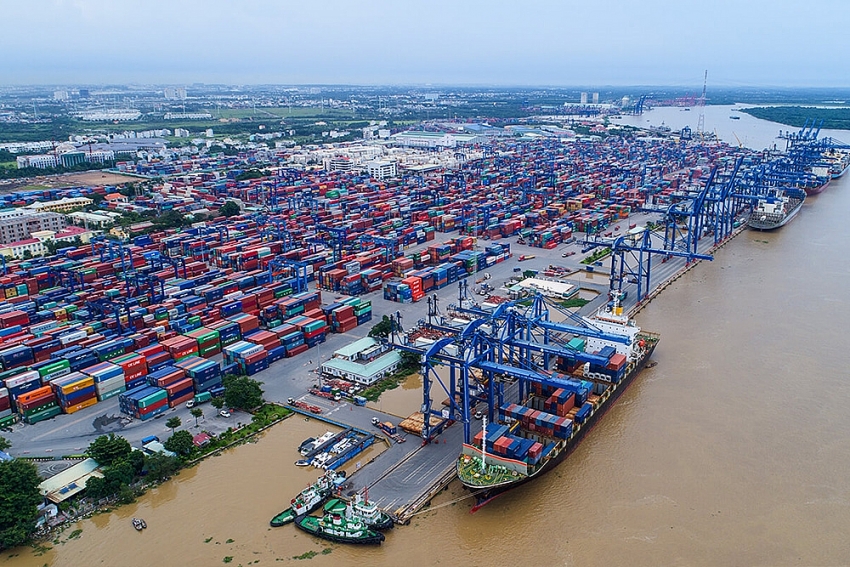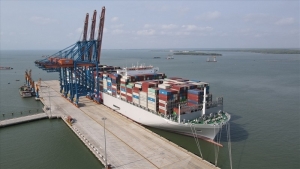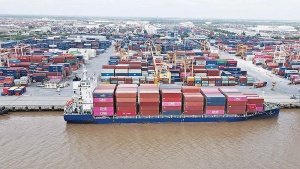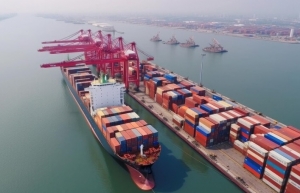Shipping costs continue to climb
 |
In recently published financial statements, it was revealed that sales expenses for Cuu Long Fish JSC in the first quarter were $850,000, a more than two-fold increase on-year. This was mainly due to the higher costs of materials, packaging, and shipping. Of these, shipping costs skyrocketed to $380,000 from $143,000.
According to the Vietnam Association of Seafood Exporters and Producers (VASEP), a series of large shipping companies such as Yang Ming Line, One, Evergreen Line, HMM, and Maersk collected additional fees due to changing routes between Asia and Europe to avoid the Suez Canal and the Red Sea area.
"This is the new challenge for seafood businesses in 2024. If tensions in the Red Sea region continue to escalate, it could increase transportation costs, and input material prices for aquaculture and processing, affecting the competitiveness and profits of seafood enterprises," said Truong Dinh Hoe, VASEP general secretary.
Since January, shipping fees to the US, Canada, and the EU have increased significantly compared to last year. Specifically, shipping to the west coast of the US increased from around $1,000 to nearly $3,000 per container, while shipping to theeast coast saw a larger raise from around $1,500 up to $4,500.
The cost of shipping containers to the EU has also seen a sharp increase since the end of last year. The cost to ship to Hamburg is now $4,350, more than double the cost in December.
Since February, a price framework for services such as pilotage, bridges, wharves, mooring buoys, loading and unloading, and seaport towing has been applied, increasing port service costs by 10 per cent.
At the same time, numerous foreign shipping firms have announced a 10-20 per cent increase in terminal handling charges (THCs). The Vietnam Shippers Association said these increases are three-times higher than the adjusted THCs at Vietnam’s seaports.
In addition to the THCs, the Vietnam Ship Agents and Brokers Association (Visaba) said that foreign shipping firms were also collecting several other types of surcharges, including fees for document handling, fuel, container cleaning, sulphur emission reduction, and container balancing fees. These surcharges are decided by the firms, without discussion or agreement with customers.
"Vietnamese shippers don't negotiate or sign shipping contracts directly, they are done through agents, so they have to accept all surcharges that shipping firms enforce to ensure delivery," said Nhu Dinh Thien, Visaba’s deputy general secretary.
"Shipping lines control transportation, while Vietnamese businesses are too small to raise their voice, so they struggle to win favourable terms when signing contracts with foreign partners," said Nguyen Thanh Cuong, deputy general director of maritime logistics firm Vfracht Danang.
He added that most shipping companies often raise prices to compensate for their own losses in freight rates, as surcharges on some shipping routes are currently higher than the actual cost of shipping. Typically, the freight rate to Chinese seaports can be zero, but the THCs can run to about $120 per 20-foot container and $180 per 40-foot container.
"Vietnam’s container loading and unloading fees are the lowest in the region, generating huge profits for foreign shipping lines because of the large difference between THCs and loading and unloading prices," Cuong said. "It is therefore necessary to regulate the ratio between loading and unloading prices at seaports and THCs."
Despite the numerous challenges, such as rising freight rates and US dollar valuation, the textile industry still has to import up to 60 per cent of its production materials. Tran Nhu Tung, vice president of the Vietnam Textile and Apparel Association, said, "It's not just the garments and textiles sector, other industries are adjusting and reconsidering the volume of orders they are receiving."
Nguyen Van Thu, chairman of G.C Food JSC, speaking about some of the problems her industry is facing, said, "Shippers give priority to orders from easy-to-deliver markets such as Japan, China, and South Korea. They are cutting down or even temporarily freezing orders in distant markets such as the US, Europe, and the Middle East."
Truong Dinh Hoe from VASEP said that seafood processing enterprises were also increasing exports to China and considering the Indian market. "These markets have a lot of potential with a combined population of nearly three billion along with diverse consumer needs, from medium to high-end segments," he said.
 | Exporters struggle with escalating shipping costs Undergoing turbulent an 2023 with fewer order, sinking revenues, and reduced profits, exporters are facing further obstacles from early 2024 amidst the soaring shipping costs. |
 | Businesses start to feel impact of Red Sea shipping crisis The Red Sea shipping crisis may put a squeeze on Vietnam-based businesses as it lingers on with no foreseeable end in sight. |
 | Shipping costs stifle progress among Vietnamese exporters Exporters are struggling with numerous challenges caused by high shipping costs, and are calling for the support of local state management authorities. |
What the stars mean:
★ Poor ★ ★ Promising ★★★ Good ★★★★ Very good ★★★★★ Exceptional
 Tag:
Tag:
Related Contents
Latest News
More News
- Financial sector charts next steps as Party Congress convenes (January 21, 2026 | 09:58)
- Three key dynamics supporting Vietnam’s GDP growth in 2026 (January 20, 2026 | 16:34)
- Carlsberg Vietnam and Grab encourage responsible enjoyment and safer mobility (January 16, 2026 | 19:55)
- Redefining Vietnam’s growth model for the era of innovation (January 16, 2026 | 16:40)
- Nghi Son refinery processes first non-Kuwaiti crude cargo (January 16, 2026 | 16:06)
- Siemens and VSIP announce landmark strategic partnership (January 15, 2026 | 14:48)
- VinFast sets record with 175,099 electric vehicles delivered in Vietnam in 2025 (January 15, 2026 | 14:24)
- Year-end shopping season faces rising uncertainty (January 14, 2026 | 18:11)
- State sector sees broad-based profit surge as major groups deliver strong results (January 13, 2026 | 17:34)
- HSBC forecasts Vietnam's GDP growth to hit 6.7 per cent in 2026 (January 13, 2026 | 17:33)




























 Mobile Version
Mobile Version